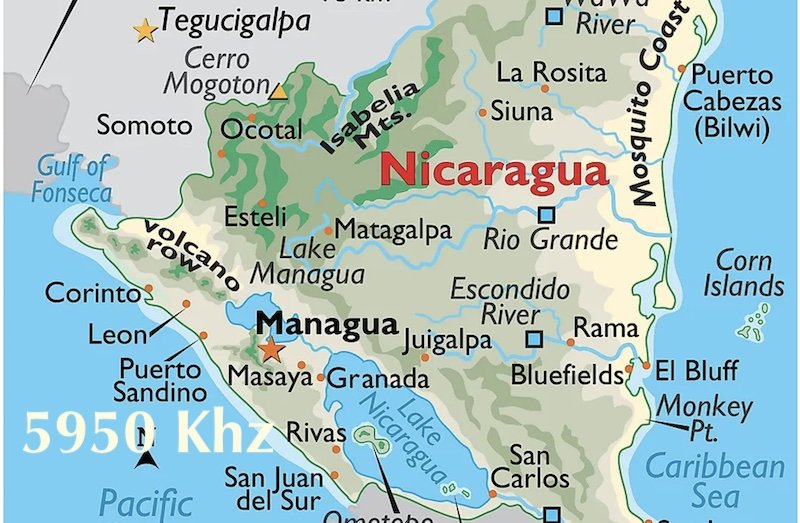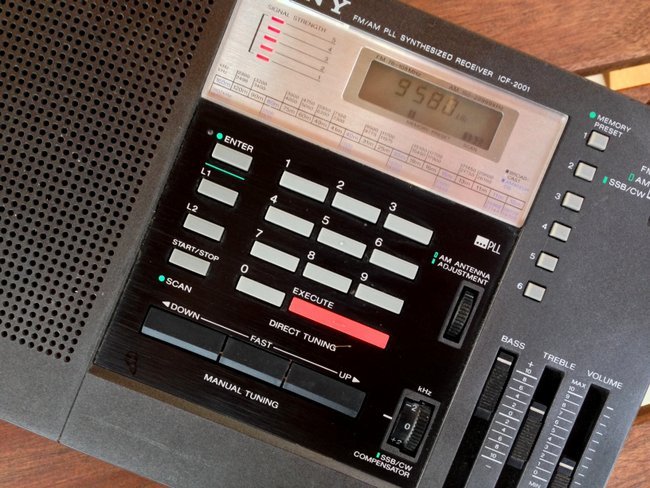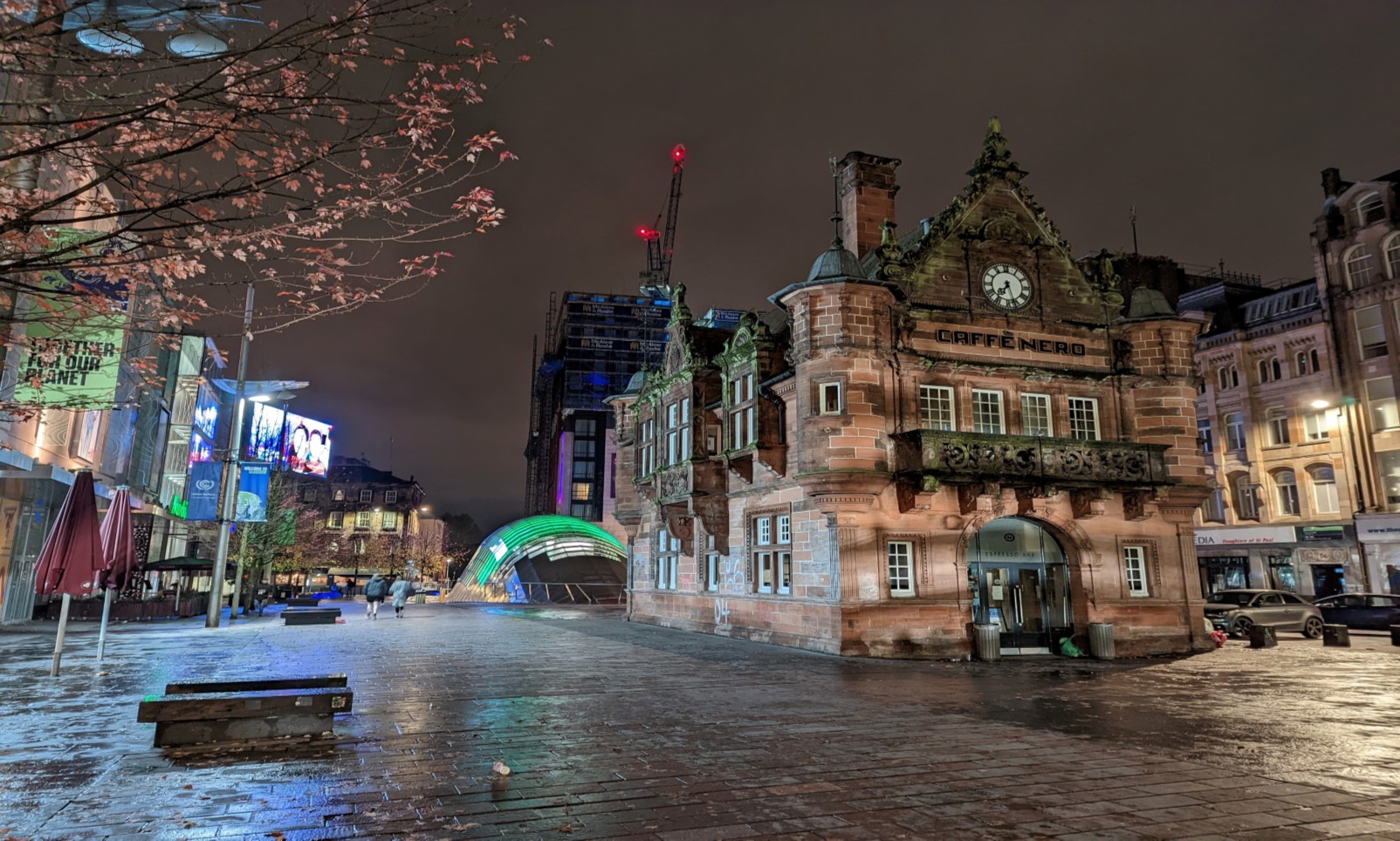Far East Broadcasting Station – Manila, Philippines – October 1975
As mentioned previously, living on an Island in the Pacific (100 miles North of Seattle, Washington…) had its benefits — a clear shot to targets in the Pacific and Asia - some of them quite rare. And while this station (FEBC) was not rare - it is still in existence today, it was a treat to hear something more folksy than the traditional party line stuff from Government broadcasters.
As a side-bar, in 1975 I was active in the Canadian International DX Club, the IRCA (International Radio Club of America…) and would soon join SPEEDX for the the very best of what the hobby would offer in the late 1970’s and into the 1980’s - the heyday of Shortwave broadcasting!
This snippet is from FEBC Manila on one of their Saturday or Sunday afternoon shows - on a 46 year old Cassette that still plays just fine! My radio was the Radio Shack DX150B (still have it - still works!) off of one of my many 1/2 wave dipoles at the time. I lived on a very small farm or ranch - 4 acres - and there was a specific amount of room for antennas…. as my mom would tell me!

Radio Pyongyang – September 1975 – 15630. Khz – English Propaganda
I’m not going to lie - living on the West Coast of Canada in the 1960’s and 1970’s (and hey - for most of my life…) had its challenges where radio reception was concerned. But, and it is a big but, we sat in front of a looking glass that gave us exquisite access to the Eastern and South Asian radio scene that was unique and often tantalizing. Where else in North America did you have an easy shot to Papua New Guinea, Indonesia (at a time when there were hundreds of little shortwave stations!) and medium wave targets from Japan, Russian (on long wave too!), both Koreas, the Philippines and so on — not to mention the Pacific Islands. Now, 46 years later, I am reopening my cassette files for another look see and mastering all of the stuff that has never been touched — and there is a lot. Here now to share with you! Here is a wonderful snippet of North Korea from my “first DX Home…” in the country on a 4 acre ranch (Apples, pears, hazelnuts and sheep!) - I had my trusty DX150B (since November of 1973) and 5 1/2 wave dipoles which I would switch between with a home-brew antenna switch — hence the clicks on this track! North Korea, at the time, had an English series of broadcasts that were almost always sabre rattling harangues - and yet this particular sound-byte sounds somewhat subdued. Either way, it was pretty indicative of the times — and in some way, North Korea has never really changed with the times. The broadcasts were often cryptic and rambling. This was an excellent example.

Radio National de Nicaragua – November 9, 1978 5950 Khz 0543 UTC
In terms of sheer bloodshed per square mile, there were few countries that could touch Nicaragua in the 1970’s.
Like Salvador, there were periods of unrest that were sustained and violent, costing lives in the tens of thousands. At the time, radio was the sole social media for getting word out on what was happening on that particular day or week. State radio tended to tow the party line and stations that did not would often just “vanish” from the air… often along with their staff and radio personalities.
The Nicaraguan Revolution was a decades-long process meant to liberate the small Central American country from both U.S. imperialism and the repressive Somoza dictatorship. It began in the early 1960s with the founding of the Sandinista National Liberation front (FSLN), but didn't truly ramp up until the mid-1970s.
It culminated in fighting between the Sandinista rebels and the National Guard from 1978 to 1979, when the FSLN succeeded in overthrowing the dictatorship. The Sandinistas ruled from 1979 to 1990, which is considered to be the year the Revolution ended.
There was, in the 70’s, an incredible opportunity to document a lot of the activities via the shortwave spectrum - sadly, I got little more than snippets - but this one is a powerful one. Have a listen.

IARU HF Championship — Results
Situation improving on RSGB IT Helpdesk
Alike But Not Alike: Broadcast vs. Ham Radio
Experience in amateur radio can be a boon to the radio engineer
RadCom December 2021, Vol. 97, No. 12
Radio Australia: August 15, 1982

Many thanks to SRAA contributor, Tom Laskowski, who shares the following recording and notes:
Here is a recording of Radio Australia's DX program called Spectrum from August 15, 1982. I believe this was recorded around 0200 UT on 17795 kHz when Australia used to come in well in the evenings here.
Some of the program highlights are:
A roundup of DX news from Bob Padula and Peter Bunn (sp) from the Australina Radio DX Club and interviews with some of the broadcasters gathered at the 1982 ANARC Convention in Montreal. Over-the-phone audio in those days was not too great so the audio is poor in this segment.
Broadcaster: Radio Australia
Date of recording: 8/15/1982
Starting time: 0200 approx.
Frequency: 17.795 MHz
RX location: South Bend, Indiana
Receiver and antenna: Sony ICF-2001 and longwire
Radio TIFC San Jose Costa Rica – 9645 Khz – November 8th, 1978 0400 UTC
Let’s face it - the late 1970’s were, arguably, the very best years for DXing and Shortwave listening - there was very little manmade interference other than the buzzy power line or the occasional TV set or furnace motor. These were the days. Stations like TIFC had no issue cutting through because all they needed was a relatively clear frequency. This was recorded off air in my Fernwood neighbourhood in Victoria B.C. in the late Fall of 1978 on my DX150B and a modest 75’ Inverted L antenna. Who needed noise reduction? Not me!

TIFC San Jose Costa Rica as received on the West Coast of Canada in 1978

